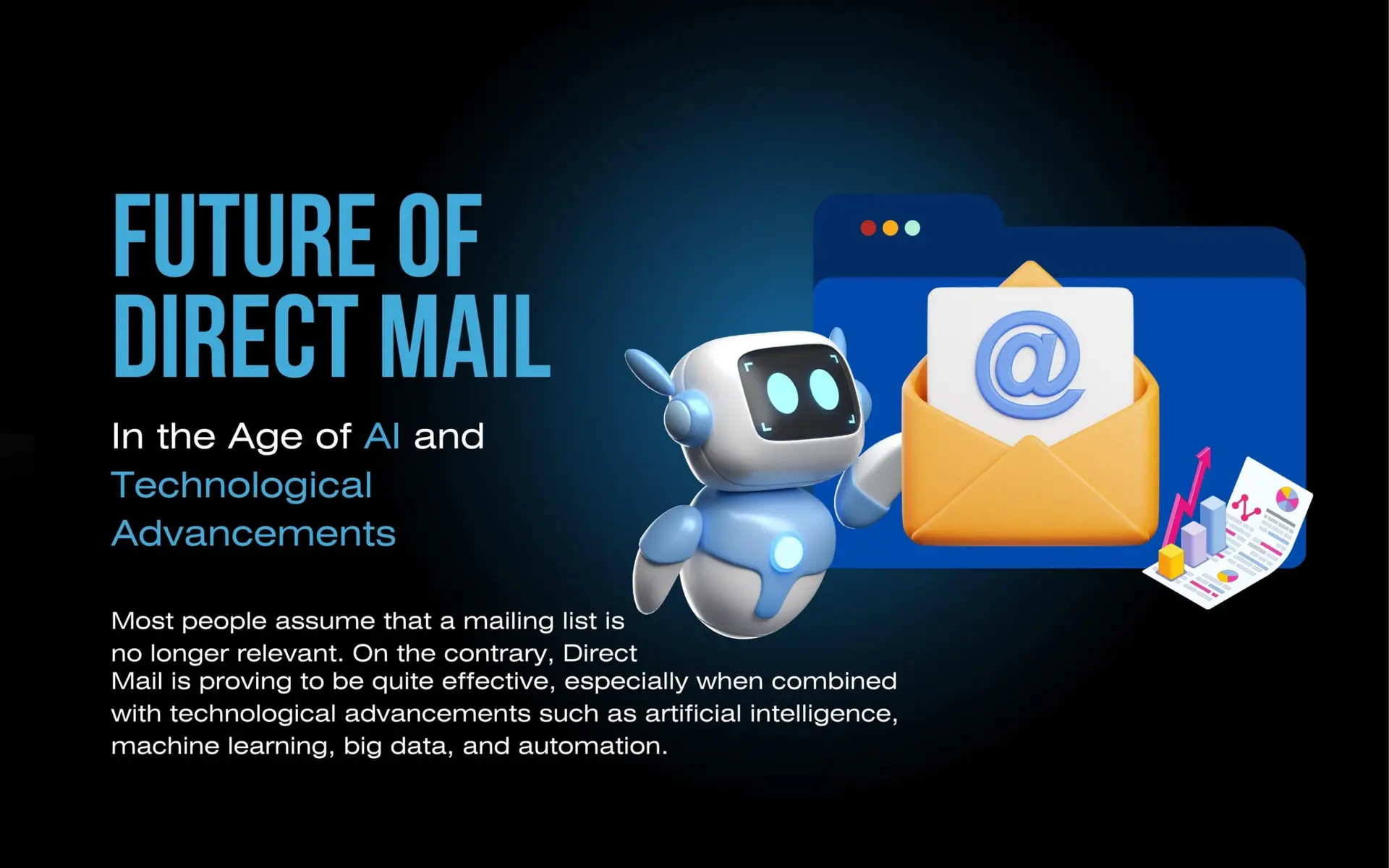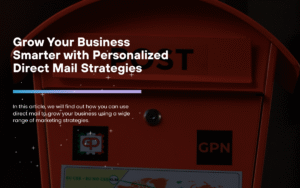Most people assume that a mailing list is no longer relevant. On the contrary, Direct Mail is proving to be quite effective, especially when combined with technological advancements such as artificial intelligence, machine learning, big data, and automation. Direct Mail has become much more personalized, backed by data analysis, with the ability to track performance, delivering great results for businesses.
The Enduring Power of Direct Mail
Direct Mail has always been a useful marketing channel for businesses looking to reach out to their target audience. What makes Direct Mail unique is the fact that you can actually touch it, unlike emails in your inbox. It is tangible, physical, and fosters a human bond that does not exist with an ephemeral medium such as email. Researchers have shown that Direct Mail has higher response rates in comparison to other digital communications. Nowadays, Direct Mail service providers are using technology to better scale their marketing campaigns.
AI-Driven Personalization at Scale
Artificial intelligence enables businesses to analyze huge amounts of data, giving them deep insights into consumers’ behavioral patterns. Applying artificial intelligence along with Direct Mail results in highly personalized mail that resonates with consumers and in turn yield a higher conversion rate.
There was a time when the only information Direct Mail service providers had was age, occupation, and gender. Imagine now they can use information such as preferences, interests, online browsing history, and so forth. Of course, this information is available only to companies that already have a relationship with their audience and know certain things about it. Using such information, companies can design highly personalized marketing campaigns targeting a specific group of buyers.
- Using AI to analyze browsing history, purchase frequency, and interaction patterns to create relevant offers.
- Identifying lifestyle preferences and values to align messaging with customer motivations.
- Automatically adjusting headlines, images, and offers for different segments in real-time.
- Breaking down broad audiences into niche groups for more focused campaigns.
- Triggering Direct Mail based on real-time actions like cart abandonment or loyalty milestones.
Smart Targeting Using Predictive Analytics
Predictive analysis is part of AI that allows businesses to focus on a specific group of buyers based on their purchase history. This way, companies no longer need to waste their time and effort on consumers who might not respond to their marketing campaigns.
With the help of predictive analytics and modeling, businesses can come up with multiple marketing campaigns for different sets of buyers based on a variety of information, such as social and cultural factors, individual preferences, and technological influences.
Automation and Workflow Integration
The ability to automate digital marketing campaigns is another advantage of combining Direct Mail with technology. Direct Mail service providers can now initiate marketing campaigns automatically based on consumer behavior. The complete process of design, printing, and mailing can be achieved through automation without human intervention.
Consumers can now receive personalized mail, motivating them to complete a purchase they are likely to be interested in. The ability to utilize technology to further influence the buyers through personalized communication makes Direct Mail much more effective.
QR Codes and Augmented Reality (AR): Bridging Offline and Online
Technology can also be used to make Direct Mail more interactive, increasing consumer engagement. For example, by adding QR codes, PURLs, and dedicated phone numbers, businesses can inform consumers about their brand and services using promotional videos offering them discounts as well.
Not only that, but such tools can also be used to track the performance of marketing campaigns, allowing businesses to engage customers both online and offline. Businesses can now target consumers using valuable insights, increasing the conversion rate.
- Monitor how many people scan QR codes or visit PURLs to measure campaign performance.
- Track inbound calls to dedicated phone numbers via cloud services and measure performance based on response (number of calls, call duration, etc.)
- Instantly connect recipients to digital platforms—like product pages, booking forms, or app downloads.
- Add a layer of interaction by letting users visualize products, try virtual samples, or tour spaces through their smartphones.
- QR codes can direct each recipient to a unique landing page tailored to their preferences or past behavior.
- Use digital engagement to gather emails, preferences, or survey responses to further refine future campaigns.
Data Privacy and Consumer Trust
Data privacy has become a serious concern for both consumers and businesses. This is the reason why the demand for Direct Mail has significantly increased. Unlike other forms of digital communication, Direct Mail is much more confidential, gaining the trust of consumers.
Direct Mail can help businesses build long-lasting relationships with consumers based on transparency and honesty. Not only that, but Direct Mail allows companies to stay compliant by adhering to data privacy laws.
The Role of Big Data in Continuous Optimization
Big Data allows businesses to monitor the performance of their marketing campaigns based on a wide range of factors, including open rate, response rate, and conversion rate. With that information, AI can redesign marketing campaigns, making them much more effective in the future.
By using this strategy, businesses can continue to improve their marketing campaigns, making them much more potent, delivering outstanding results. The best part is that the more campaigns you run, the more you learn about the consumers, allowing you to create highly personalized Direct Mail campaigns.
Conclusion
As mentioned earlier, those who think Direct Mail is no longer useful might need to revisit their marketing strategies. As discussed above, Direct Mail is not only useful, but it is proving to be more effective than digital marketing channels. By integrating the latest technological advancements, such as AI, predictive analysis, and Big Data, businesses can create customized Direct Mail campaigns to target a specific group of buyers. The future of Direct Mail looks bright, with more businesses adopting marketing mail lists for their marketing campaigns.






